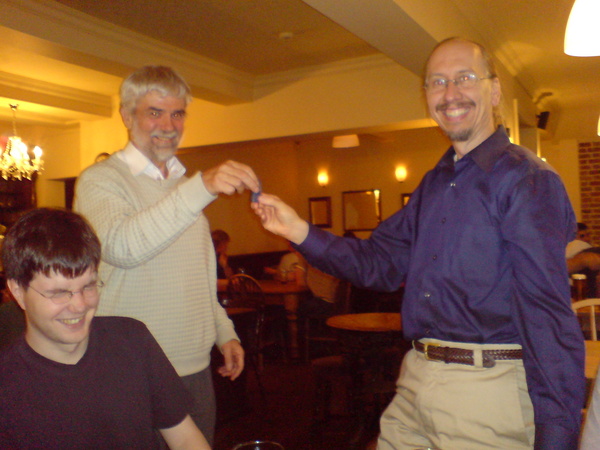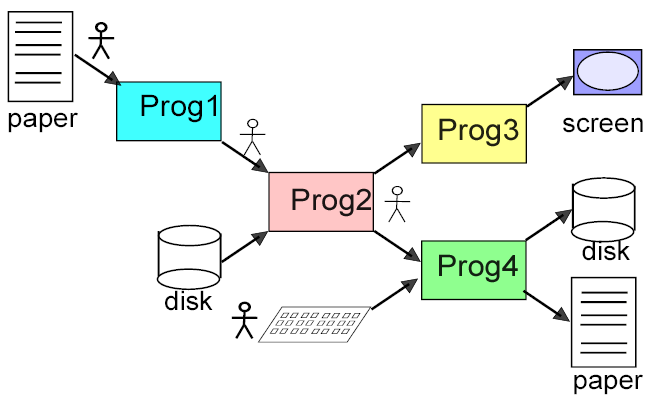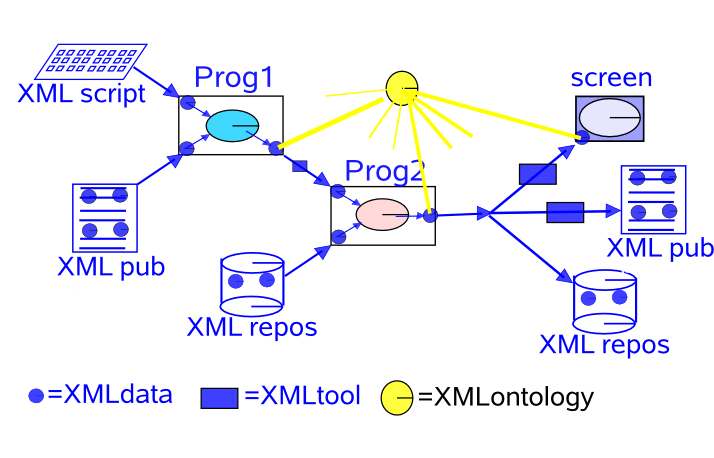Last night we met at the Thirsty Bear pub in San Francisco. This was the second anniversary of the first BO meeting (in San Diego). There were nine of us, and the membership and programs are growing. People are taking us seriously. It is still extremely hard to get support for Open Source in domains, especially chemistry (though some of us can thank funding bodies for our existence). The market is slewed to the pharma industry who have little effective interest in encouraging Open Source, even though they know that the current products are broken and do not interoperate (see earlier blogs). It is an enormous labour of love to create tools which appear to duplicate existing commercial offerings and be ignored. That is what Christoph has born for several years as guru of CDK (the Chemistry Devlopment Kit) – the mantle having now passed to Egon Willighagen.
CDK contains all the basic chemoinformatics routines for reading and writing molecules, analysing their chemistry by topology and fragments, substructure searching, property calculation, etc. Unlike most commercial offerings the algorithms are open and so available for validation. The BO takes this seriously and is accumulating reference data on which the programs rely and against which they can be tested.
I walked 5 miles round SF looking for blue obelisks in rock shops – few of those anyway and they were completely the wrong sort. So Christoph’s award is neither blue nor an obelisk. It’s purple and pointy. But no doubt it can be refactoered, perhaps to a superclass of colourable pointy object, and then subclassed.
Raja took the picture. When I get it I’ll try to remember to post it here
-
Recent Posts
-
Recent Comments
- pm286 on ContentMine at IFLA2017: The future of Libraries and Scholarly Communications
- Hiperterminal on ContentMine at IFLA2017: The future of Libraries and Scholarly Communications
- Next steps for Text & Data Mining | Unlocking Research on Text and Data Mining: Overview
- Publishers prioritize “self-plagiarism” detection over allowing new discoveries | Alex Holcombe's blog on Text and Data Mining: Overview
- Kytriya on Let’s get rid of CC-NC and CC-ND NOW! It really matters
-
Archives
- June 2018
- April 2018
- September 2017
- August 2017
- July 2017
- November 2016
- July 2016
- May 2016
- April 2016
- December 2015
- November 2015
- September 2015
- May 2015
- April 2015
- January 2015
- December 2014
- November 2014
- September 2014
- August 2014
- July 2014
- June 2014
- May 2014
- April 2014
- March 2014
- February 2014
- January 2014
- December 2013
- November 2013
- October 2013
- September 2013
- August 2013
- July 2013
- May 2013
- April 2013
- March 2013
- February 2013
- January 2013
- December 2012
- November 2012
- October 2012
- September 2012
- August 2012
- July 2012
- June 2012
- May 2012
- April 2012
- March 2012
- February 2012
- January 2012
- December 2011
- November 2011
- October 2011
- September 2011
- August 2011
- July 2011
- May 2011
- April 2011
- March 2011
- February 2011
- January 2011
- December 2010
- November 2010
- October 2010
- September 2010
- August 2010
- July 2010
- June 2010
- May 2010
- April 2010
- August 2009
- July 2009
- June 2009
- May 2009
- April 2009
- March 2009
- August 2008
- July 2008
- June 2008
- May 2008
- April 2008
- March 2008
- February 2008
- January 2008
- December 2007
- November 2007
- October 2007
- September 2007
- August 2007
- July 2007
- June 2007
- May 2007
- April 2007
- December 2006
- November 2006
- October 2006
- September 2006
-
Categories
- "virtual communities"
- ahm2007
- berlin5
- blueobelisk
- chemistry
- crystaleye
- cyberscience
- data
- etd2007
- fun
- general
- idcc3
- jisc-theorem
- mkm2007
- nmr
- open issues
- open notebook science
- oscar
- programming for scientists
- publishing
- puzzles
- repositories
- scifoo
- semanticWeb
- theses
- Uncategorized
- www2007
- XML
- xtech2007
-
Meta





 nonxmlchain.png
nonxmlchain.png
